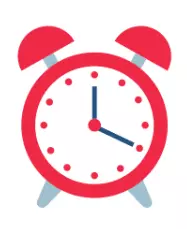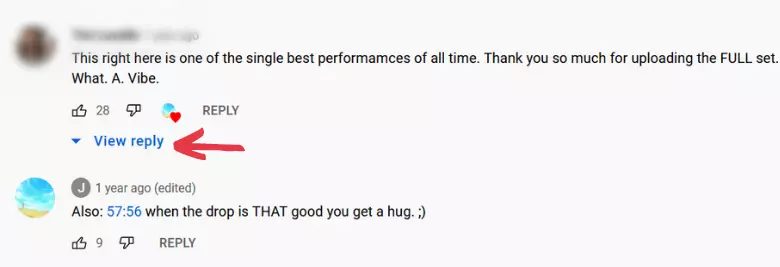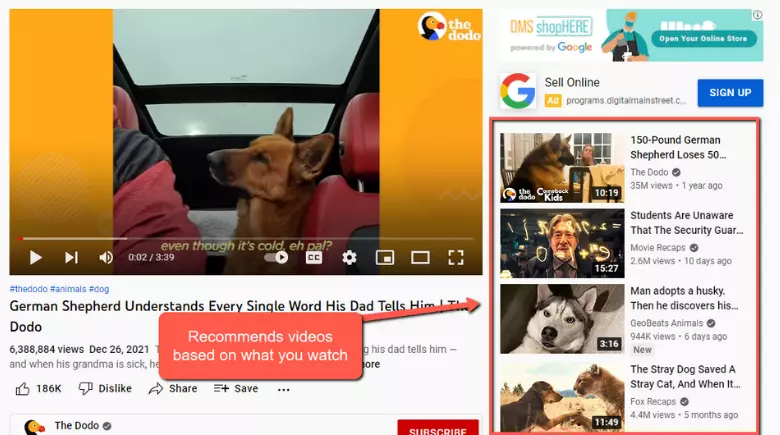
In 2024, the YouTube algorithm is a complex beast that is constantly evolving. It can be tough to keep up with all of the changes, but if you want to rank your videos and get more views, it's essential to understand how it works.
In this blog post, we will take a look at how the algorithm has changed over the years and what you need to focus on now in order to optimize your videos for success.
Whether your YouTube Channel is about cats or technology, the algorithm is always changing. If you don't keep up with the changes and give YouTube what it wants, your videos will be buried and you'll get very few views.
What is The YouTube Algorithm?
The Youtube algorithm is essentially a system that recommends videos based on what people are searching for.
It is Ai driven, and focuses on things like:
- Relevance – it chooses videos based on people’s interests (base and what they search for)
- Watch time – it prioritizes content to try to keep people on the platform longer
- User satisfaction – it looks at things like likes and dislikes and also comments to determine what videos should be prioritized or not
The Youtube algorithm is constantly being tweaked and adapts to what people are looking for and always tries and to deliver the content that it thinks people will like.
I am sure you’ve noticed this trend yourself where if you watch a lot of certain videos such as cat videos, you’ll get other cat videos recommended.
Why Should You Use YouTube?
YouTube has grown exponentially since its inception back in 2005. It is now the second largest search engine in the world, behind only Google. Every day, billions of people watch YouTube videos and generate billions of views.
In fact, YouTube is so popular that it had to reduce video quality during the pandemic because so many people were watching. There was an imminent risk of YouTube crashing if they didn't.
There are a few reasons why you should be using YouTube:
Now that we've looked at some of the reasons why you should be using YouTube, let's take a look at how the algorithm works so that you can optimize your videos for success.
How the Algorithm Has Changed Over the Years
So, what should you do to make sure your videos are ranking in 2024? First, let's take a look at how the algorithm has changed over the years.
The YouTube algorithm has changed a lot since it was first created. In the early days, it was much simpler and easier to understand. You could easily game the system by keyword stuffing your titles and tags, and you would see a boost in views as a result.
In 2012, YouTube released an update that emphasized engagement signals like likes, comments, and shares. This meant that if a video was getting a lot of engagement from viewers, it would be more likely to show up in search results and be recommended to other users.
In 2014, YouTube changed the algorithm again to prioritize watch time over view count. This was a shift to try and encourage creators to make longer videos that kept people engaged for longer periods of time. The thinking was that if a viewer watched more of your video, they were more likely to enjoy it and subscribe to your channel.
In 2015, another update placed even more emphasis on watch time by introducing "session watch time." This metric measures how long someone watches a YouTube session, even if they are watching multiple videos. So, if someone watched two of your videos back-to-back, that would count as one session with a total watch time of both videos combined.
The algorithm has continued to evolve since then, but these are some of the biggest changes that have occurred. In recent years, there has been an increased focus on personalization and recommendation. This means that YouTube is trying to show each user video content that is tailored specifically for them.
To do this, YouTube looks at things like what type of content you usually watch, how long you tend to watch videos, and what time of day you are most active on the site. Based on all of this data, YouTube will try to show you more videos that it thinks you will enjoy.
This personalization means that the algorithm is constantly changing and adapting, which can make it difficult to keep up with. However, there are some general tips that you can follow when you create videos in order to ensure they are being seen by as many people as possible.
2024 Algorithm Signals
It's important to understand the algorithm "signals" that will determine whether or not your videos are being recommended to viewers. Take note of these key areas:
How long viewers watch videos: As we mentioned before, YouTube wants people to watch videos for as long as possible. The algorithm looks at "session watch time," which is the total amount of time someone spends watching YouTube videos in a single session.
What viewers are watching: In addition to looking at how long viewers watch videos, YouTube also looks at what type of content they are watching.
What viewers are NOT watching: YouTube also looks at what viewers are NOT watching. For example, if a viewer watches one of your videos and then immediately leaves YouTube, that is considered a "bounce."
Previously watched videos: YouTube will also look at what other videos a viewer has watched in the past. This helps YouTube understand a viewer's interests and preferences.
What videos are being liked and disliked: This helps YouTube understand how engaging a video is.
Past Searches of the Viewer: The algo will look at what a viewer has searched for in the past. This helps YouTube understand what type of content the viewer is interested in. Identifying what these are and using them can get you more traffic.
Demographic and geographic information: The algorithm will also take into account a viewer's location and age.
Frequency of uploads: If you are constantly uploading new content, the algorithm will see your channel as being active and recommend you more often.
Impressions: Impressions are how often your video shows up in search results and on the home page. Your goal is to get as many impressions as possible.
How long a video has been online: New videos will get recommended to people that have similar interests.
Video engagement: The algorithm will also look at how people are interacting with your videos. Are they liking them? Disliking them? Commenting on them? The more the better which means more viewers.
High growth rate and popularity: A video that is growing quickly in popularity will be recommended more often.
Areas of Focus to Get the Algorithm to Recommend Your Videos
Since we don't have an exact playbook on how to manipulate the algorithm on YouTube, you do have control over certain things in order to improve how your video ranks and how people will see it. Here are some tips to get your videos seen more often and what you should work on.
Click-Through Rate
The Click-Through rate is the percentage of people who see your video and then click on it. If your click-through rate is low, consider changing your thumbnail or title.
Watch Time
As we mentioned before, YouTube wants people to watch videos for as long as possible. The algorithm looks at "session watch time," which is the total amount of time someone spends watching YouTube videos in a single session.

You can improve your watch time by creating longer videos, or by breaking up your longer videos into multiple parts. You can also try to include more engaging content that will keep viewers watching until the end.
Take a look at what other creators are doing with similar videos. Is their engagement higher? If so, what are they doing differently?
Viewer Retention
YouTube also looks at how long viewers are watching your videos. This metric is called "viewer retention." You can improve your viewer retention by making sure your video is interesting and engaging from start to finish. Try to hook viewers in with an attention-grabbing opening, and then keep them engaged with interesting content throughout the video.
Audience Retention
In addition to looking at how long viewers are watching your videos, YouTube also looks at how many people are still watching after a certain amount of time. This metric is called "audience retention."
You can improve your audience retention by making sure your video is interesting and engaging from start to finish. Try to hook viewers in with an attention-grabbing opening, and then keep them engaged with interesting content throughout the video.
Comments
YouTube also looks at how many people are commenting on your videos. This is a good indicator of Engagement, which YouTube values highly.

You can encourage comments by asking viewers to leave their thoughts in the comments section, or by holding a contest or giveaway. Be sure to reply to comments as well. The algorithm will see the engagement on your side as well and count it towards your video.
Video Descriptions
Make sure to include keywords in your video descriptions. This will help YouTube understand what your video is about and recommend it to people who are searching for that term.
A good rule of thumb is to summarize what the video is about in your description.
Some people write a complete translation in the description but that's not necessary. Just sum up the video because the algorithm will see this and include it as a means to determine where and how often your video will appear.
Tags
In addition to keywords, YouTube also uses tags to understand what your video is about. Tags are like keywords, but they're specifically for videos.
You can add tags to your videos by going to the "Advanced Settings" tab when you're uploading a new video. Click on "add tags" and enter in relevant terms.
Be sure to use different tags for each of your videos so that YouTube doesn't think you're spamming. You can also use consistent tags on each video that identify what your channel is about.
For example, if your channel is about airplanes, you'll want to include the tags "aviation", "airplanes", "aircraft", "plane", etc. on each video. Even if the video is about "The Best Airports in the World", you should still use those tags. This is a tactic that YouTuber Matt Par uses in his course and has seen a lot of success with it.
Title
Your video's title is one of the first things people will see when they come across your video, so make sure it's catchy and to the point. A good title should be under 60 characters and describe what the video is about. The title is key for the algorithm as it is the first thing it reads. Don't confuse it by being too general. Make the title specific and also ensure that it matches the content.
Thumbnail
Your thumbnail can also affect the algorithm. If your thumbnail attracts a lot of attention via clicks, then your click-through rate will be high. As mentioned before, a high click-through rate can get your video shown more.
For more info on ranking videos, be sure to check out my article on YouTube SEO tips. To get a deeper understanding of metrics, see my article on YouTube Analytics.
Where Does the Algorithm Recommend Your Videos?
The YouTube algorithm selects videos for recommendation in a few places. The most obvious place is on the YouTube homepage, where YouTube shows you a mix of content it thinks you'll like.

The algorithm also recommends videos in the "Up Next" section in suggested videos, which appears to the right of the video you're currently watching. YouTube also uses algorithms to determine which videos to show in search results and related video sections.
How Does YouTube Shorts Algorithm Work?
The YouTube Shorts algorithm is based on a few factors:

All these factors are used to determine how popular a video is, and therefore how high up the YouTube Shorts algorithm will rank it.
The most important factor seems to be number of views, followed by number of likes.
This makes sense, as a video with a lot of views is likely to be more popular than one with just a few views. Shares and comments also seem to play a role in the algorithm, although not as much as views and likes. How new the video also seems to be a factor, with newer videos being ranked higher than older ones.
So, if you want your YouTube Short to be ranked high up in the algorithm, make sure it has a lot of views, likes and shares. Also, try to keep it relatively new. By following these tips, you should be able to get your YouTube Shorts ranked high up in the algorithm and seen by more people.
External Factors That Impact The YouTube Algorithm
While YouTube's algorithm is mainly based on internal factors, there are some external factors that can impact it. One of these is the time of day. Videos tend to get more views during the day, so if you post a video at night it's likely to get less views than one posted during the day.
This means that your video will be ranked lower in the algorithm and won't be seen by as many people. Another external factor is how long ago the video was posted. A video that was posted a year ago is likely to have less views than one that was posted a week ago.
This is because people are more likely to watch videos that are new and relevant to them. If you want your video to be seen by more people, try to post it when people are most likely to be online and looking for videos.
How Can I Beat the YouTube Algorithm?
I hate to say it, but the best way to beat YouTube algorithm is by creating great content that people want to watch. If your videos are good, people will watch them and share them with their friends. This will help your videos get more views and be ranked higher in the algorithm.
There's no way of cheating the system. The algorithm is designed to surface the best content to people, so if your videos are good they will be recommended to people.
Is the YouTube Algorithm Real?
Yes, the YouTube algorithm is real and it's constantly changing. YouTube makes changes to the algorithm often and what works today might not work tomorrow.
One thing that will ALWAYS be a factor is great content. This is why your video performance is important so focus on creating great content that people will want to watch.
Learn More About the Algorithm With a Good Course
This article gave you a ton of information about how the algorithm works and what you can do to take advantage of it as much as possible.
If you are serious about becoming a YouTuber, there are courses that you can take that can not only show you how to start a YouTube channel, but how to get the best rankings possible. I've taken many YouTube courses and I've whittled them down to just a few that I found to be the most effective.
Conclusion
Now that you understand how the YouTube algorithm works and what to focus on, you can start making videos that rank higher in YouTube search.
Although there are so many different ranking factors, my advice is to see what your key competitors are doing. Look at everything they do from the title structure to the content and quality. There's a reason why the algorithm is favoring them over you. Don't copy, just emulate their success.
Related Articles
- How I Make Faceless YouTube Channels With AI - April 9, 2024
- Top 21 Faceless YouTube Niches to Earn Big Profits in 2024 - April 3, 2024
- Dave Nick YouTube Automation Systems Review 2024 - March 28, 2024
